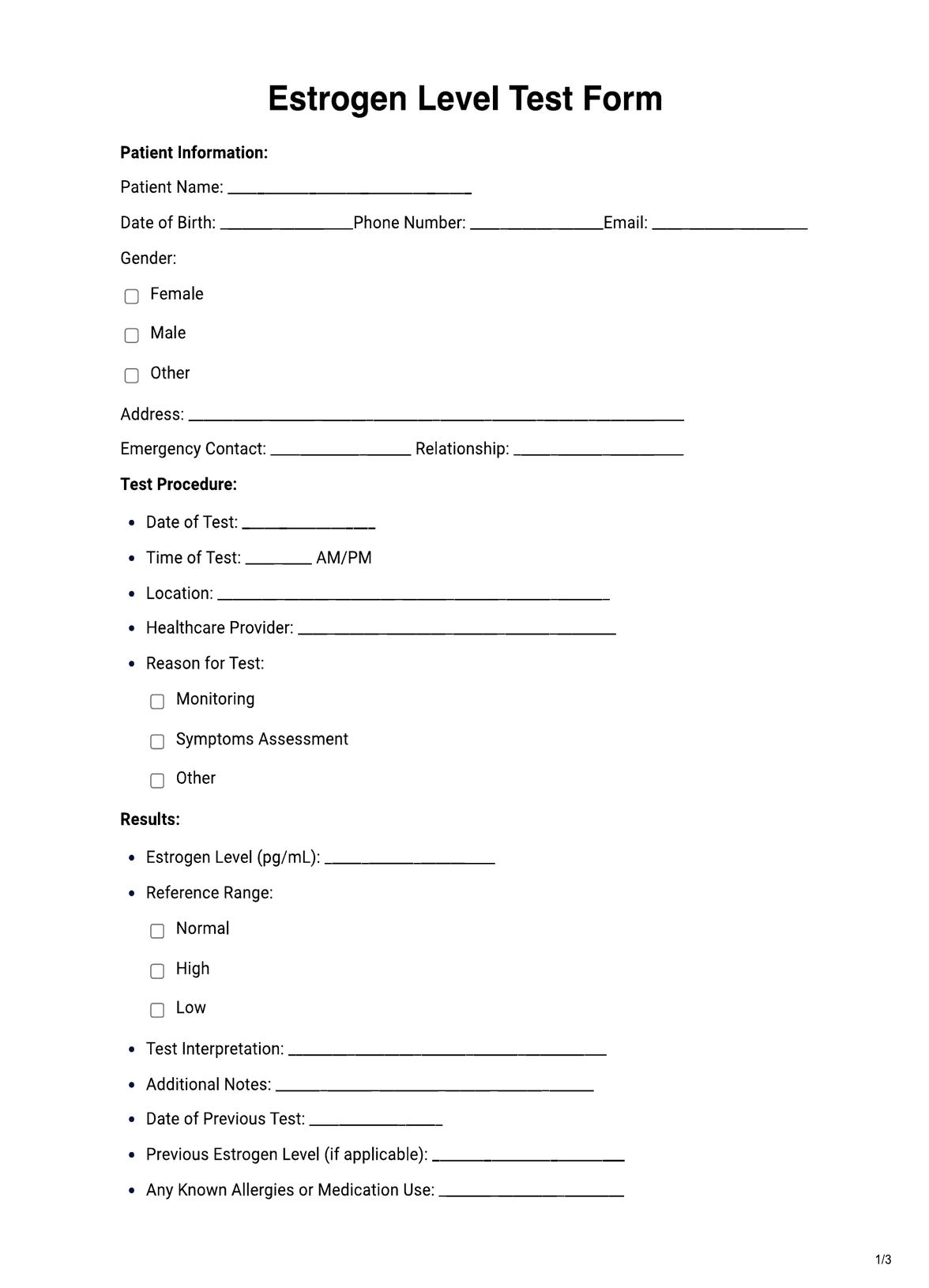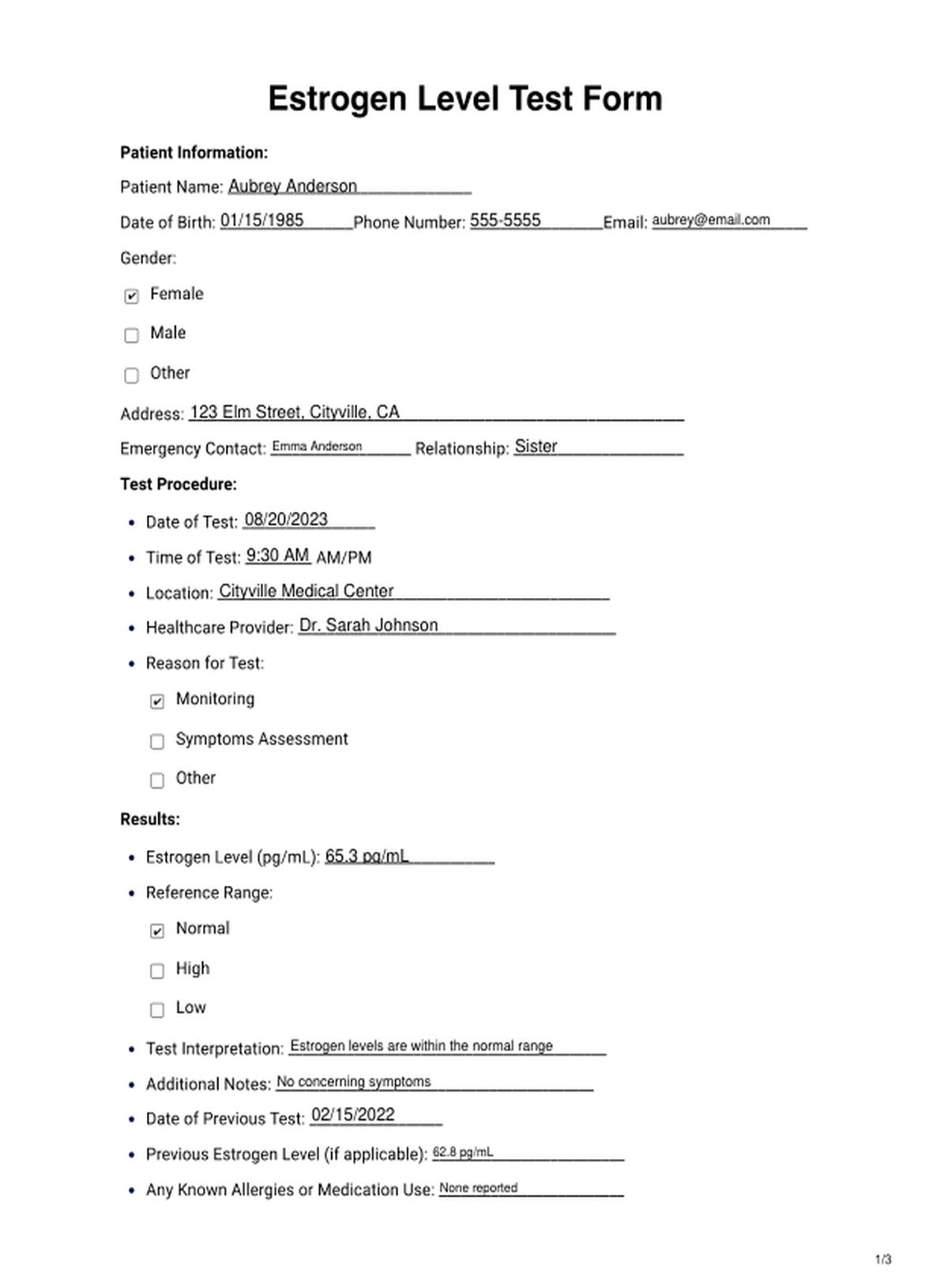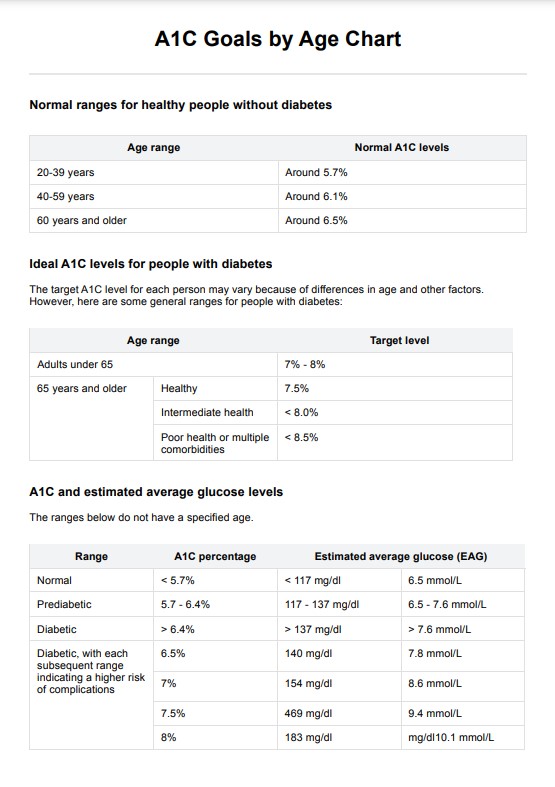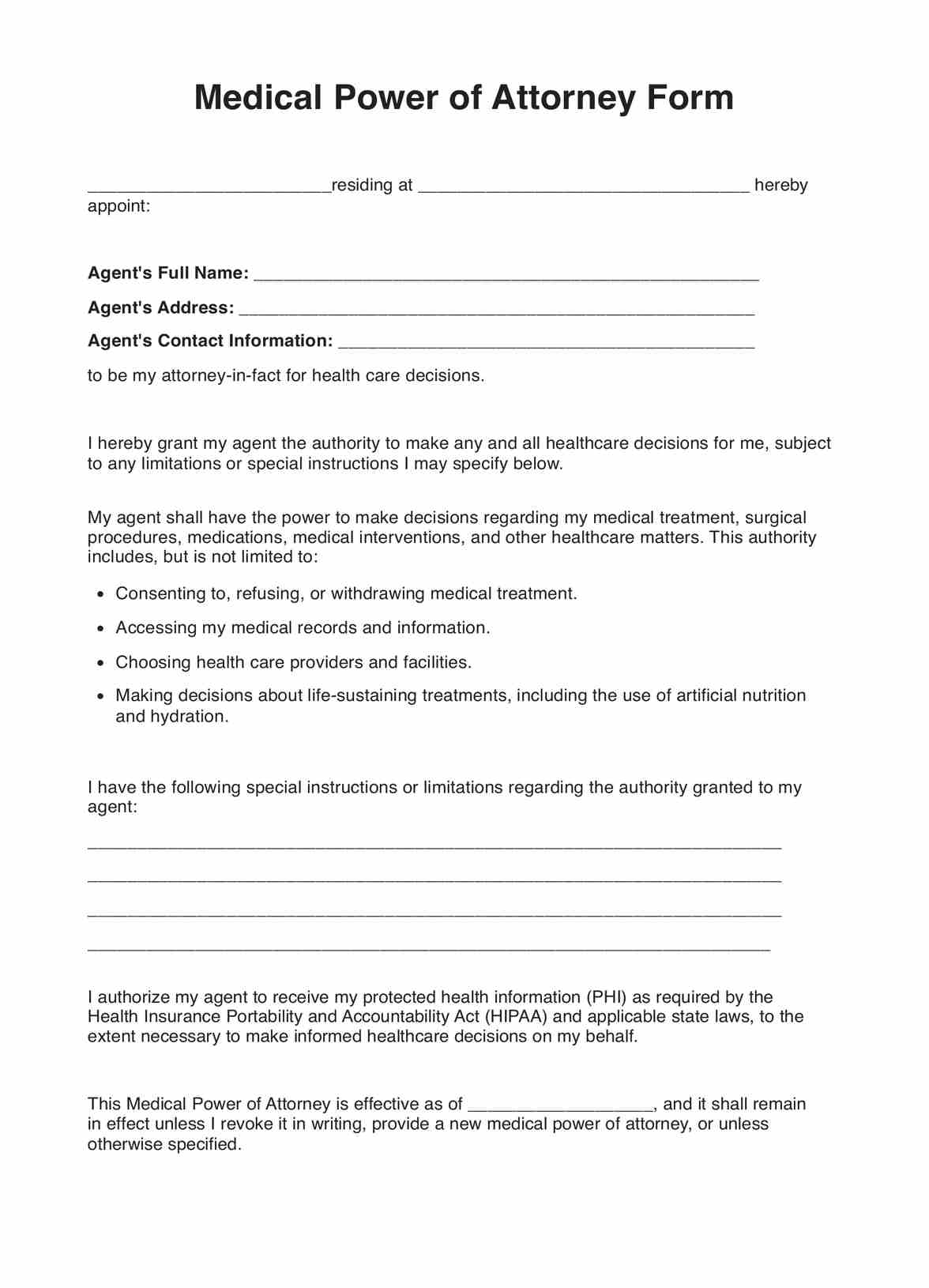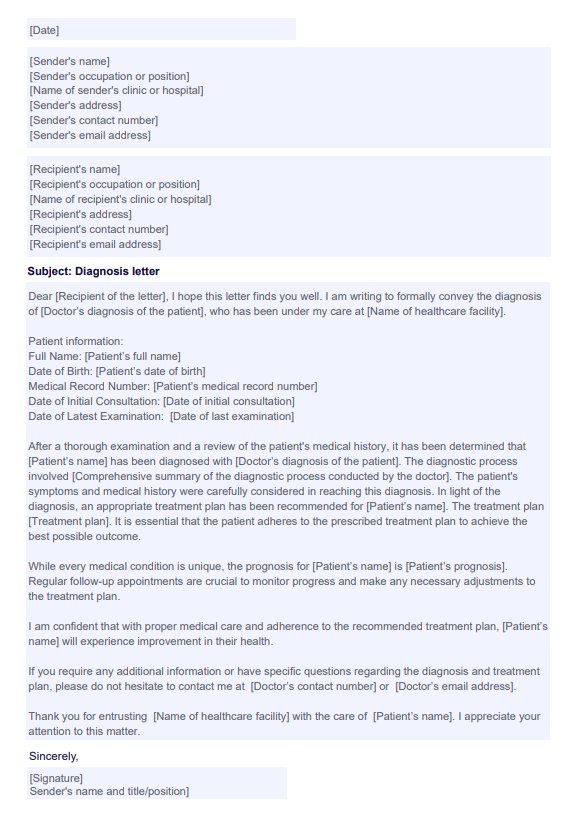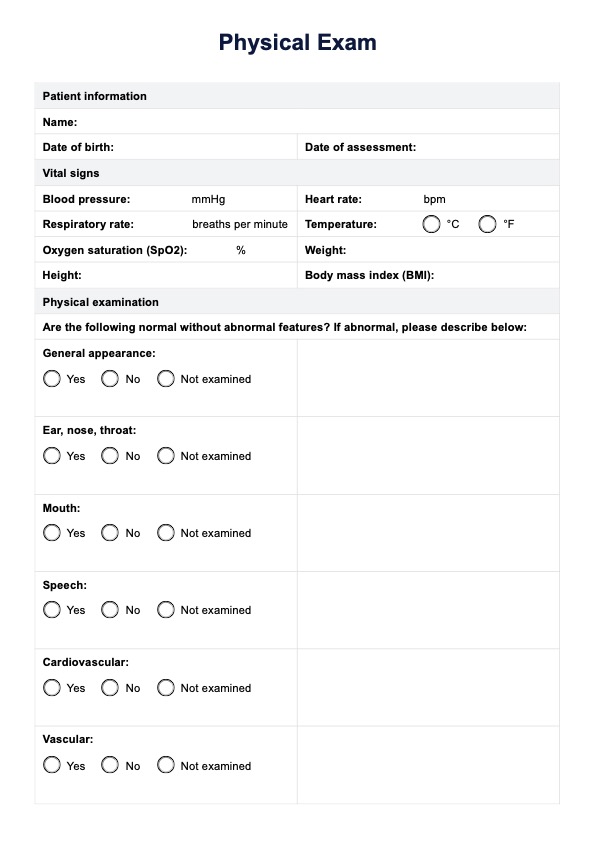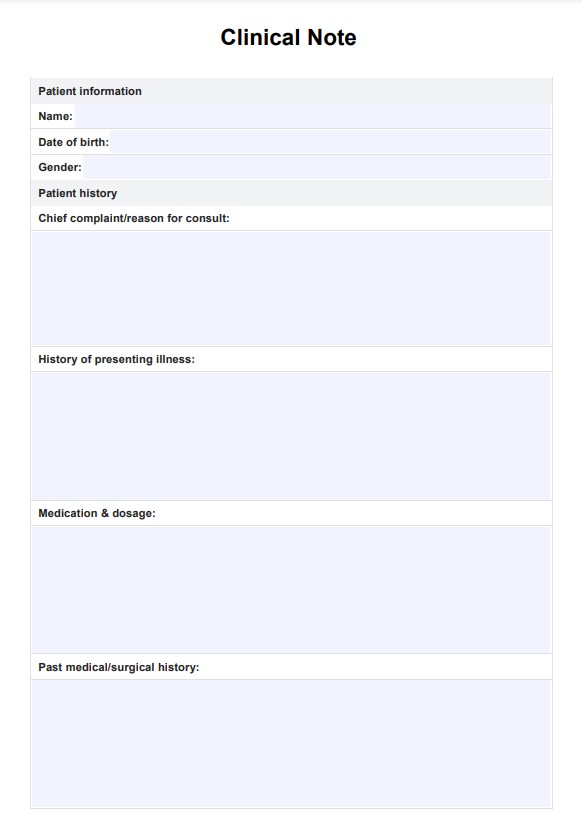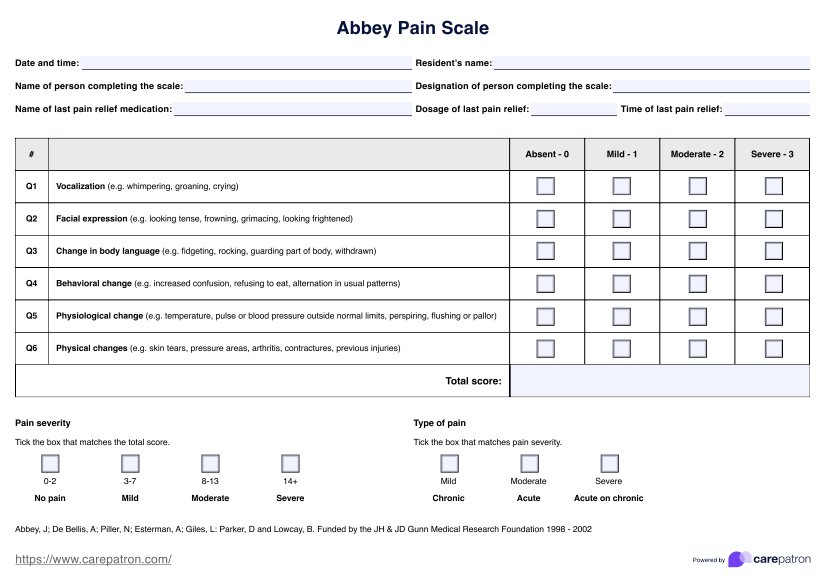Esophageal pH Test Reports
Get access to a free Esophageal pH Test Report template. Create detailed reports for esophageal pH testing and monitor acid reflux and related conditions.
�?�


What is an Esophageal pH Test?
An Esophageal pH Test is a diagnostic procedure used to measure the acidity levels in the esophagus. This test is primarily employed to diagnose conditions like acid reflux, gastroesophageal reflux disease (GERD), and other related disorders that involve abnormal stomach acid levels in the esophagus. Monitoring esophageal pH levels is essential for understanding and managing these conditions.
Healthcare providers often order an Esophageal pH Test to assess the severity of acid reflux symptoms in patients. It is a simple yet effective procedure that provides valuable insights into the acid levels within the esophagus.
The Esophageal pH Test involves the placement of a pH probe into the esophagus, typically during an endoscopy or through the patient's nose. This probe continuously measures the acidity levels in the esophagus over a specific period, usually 24 hours. The data collected during the test is then analyzed to determine if there is excessive acid exposure in the esophagus.
An Esophageal pH Test Report includes essential information such as the patient's details (name, age, gender), the test date, the procedure performed, and information on the pH probe used. The report also presents the recorded pH measurements and assesses whether the patient's pH levels fall within the normal range or indicate acid reflux.
Esophageal pH Test Reports Template
Esophageal pH Test Reports Example
How does it work?
Carepatron's free Esophageal pH Test Report template helps you document and organize all relevant information related to esophageal pH testing in a single file. Here's how to use the template:
Step One: Access the report
Download the printable Esophageal pH Test Report template using the link on this page. You can also find it in the Carepatron app or our resources library.
Step Two: Fill in the details
Provide the patient's name, age, gender, and test date. Include any additional notes or comments if necessary.
Step Three: Record pH measurements
Document the pH measurements obtained during the Esophageal pH Test. These measurements indicate the acidity levels in the esophagus over the monitoring period.
Step Four: Interpret results
Based on the pH measurements, assess whether the patient's esophageal acidity falls within the normal range or if there is evidence of acid reflux or related conditions.
Step Five: Store for future reference
Save a digital copy of the report in your patient's electronic health records for easy access and future reference.
When would you use this Esophageal pH Test Report?
The Esophageal pH Test Report template is helpful for monitoring and diagnosing conditions related to acid reflux and abnormal esophageal acid levels. You can also use this report template to:
Assess treatment effectiveness
Our Esophageal pH Test Report allows you to compare the patient's pH measurements before and after treatment. This comparison can help determine if the current treatment plan is adequate or if adjustments are needed.
Track progress over time
By storing a digital copy of each report in your patient's electronic health records, you can track their progress and compare previous results with current ones. This helps monitor treatment success and make informed decisions about future care.
Communicate with other healthcare providers
The Esophageal pH Test Report can be shared with other healthcare providers involved in the patient's care, such as primary care physicians or specialists. This facilitates communication and collaboration between you and other providers to ensure the best possible treatment for the patient.
Streamline administrative tasks
Utilizing an Esophageal pH Test Report template simplifies creating and managing these reports. A consistent format makes administrative tasks more efficient, allowing you to spend more time on patient care and less on paperwork.
What do the results mean?
The esophageal pH test measures the acid level in the esophagus for 24 to 48 hours. The results are represented in the form of a pH score.
Normal results
Normal esophageal pH levels generally range from 4 to 7, reflecting a mildly acidic to neutral environment. However, specific normal ranges may vary depending on the laboratory or healthcare facility.
Abnormal results
Abnormal results on the Esophageal pH Test Report may indicate acid reflux, GERD, or related conditions. Elevated acidity levels in the esophagus can suggest excessive acid exposure and potential damage to the esophageal lining. These results may require further evaluation and treatment.
Patients with abnormal results must follow their healthcare provider's guidance and treatment plan to effectively manage acid reflux and related conditions.
Note that esophageal pH levels can fluctuate throughout the day, and a single test may not provide a complete picture of a patient's condition. Repeating the test or combining it with other diagnostic tools may be necessary to make an accurate diagnosis.
Commonly asked questions
A gastroenterologist or other healthcare provider typically requests an esophageal pH test to diagnose and monitor acid reflux, GERD, and related conditions.
During an esophageal pH test, a thin tube is inserted through the nose and into the esophagus. The tube has sensors that measure the level of acidity in the esophagus for a set period, usually 24 to 48 hours. The results are recorded and analyzed by a computer and then reported to the healthcare provider.
Esophageal pH Tests can diagnose and monitor acid reflux, GERD, and related conditions. They may also be used to evaluate the effectiveness of treatment plans or assess any changes in a patient's condition.


